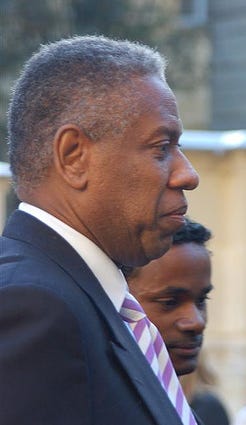image via wikimedia commons
I remember what it was like to be black and working in the New York magazine industry in the 90s and the aughts. Back when glossy magazines could afford to send their staff home in town cars after a long night just before putting an issue to bed. That was before Barack Obama; before George Floyd. It was before many of these organizations really gave a damn about diversity.
And despite the fact that minorities were a majority in New York City by 1991, there were few if any black faces at places like 4 Times Square, the former headquarters of Conde Nast. In the world of glossy magazines — a world that almost no longer exists — Conde Nast was ne plus ultra. They paid the best and offered the brightest perks for hard-working journalists and editors angling their way to the top. Or should I say young and white journalists and editors angling their way up the media ladder. It was never said out loud, of course (Averted Gaze), but it was quite well understood among the ambitious and the young that human resources at Conde Nast gently weeded out the not thin, the not impeccably appointed and, quite frankly, the not white from consideration for their ranks.
That’s what made Andre Leon Talley so remarkable. He somehow didn’t get that memo, or if he did it was not going to stop him from achieving his American dream. The very notion of a black man from the Jim Crow South defying the white supremacist organizational pull of such an insidious den of vipers simply boggles the imagination, in retrospect. The obstacles to ascendance at that point in time seem almost impossible. Not now, of course, after Obama and after George Floyd; but, then.
Somehow Andre Leon Talley rose at Conde Nast and surged well beyond. Was it the maximum fabulosity? The sharp wit? His disarming size as well as lifeforce among the flitting butterflies? His encyclopedic understanding of fashion history? Or, most likely, was it a combination of all of the above and some intangible x? Among his many accomplishments, according to his Times obituary:
He was the receptionist at Interview magazine under Andy Warhol; the Paris bureau chief of Women’s Wear Daily under John Fairchild; the creative director and editor at large of Vogue under Anna Wintour. He helped dress Michelle Obama when she was first lady, was an adviser and a friend to the designer Oscar de la Renta, and became a mentor to the supermodel Naomi Campbell. He cast Ms. Campbell as Scarlett O’Hara in a shoot for Vanity Fair that reimagined ‘Gone With the Wind’ with Black protagonists long before fashion woke up to its own racism.
And that’s just a taste. Imagine the will, the tenacity and the perseverance of such a rise! How did he do it? He advanced, to be sure, because he was allowed in the room, but also because he was significantly the most qualified by far. Anna Wintour has noted that Talley was her superior in knowledge of fashion history, from which she learned quite a bit during their time together. Wintour and Talley were among the most influential voices in fashion for decades. They participated in the world of style that they were largely helping to create. And from that position at the top he advocated for diversity, but even more so when he was beyond the gilded cage of Conde Nast.
But, at what cost? Would Andre have lived beyond 73 if he had not had to fight so hard for so long and alone? No one knows; but the question should at least be asked.
May Andre Leon Talley finally rest in peace in a place free of headwinds and be judged upon his accomplishments as a man of faith who cared for his Church and in advancing the diverse creations of His Lord. RIP.



Loved this one - thank you.